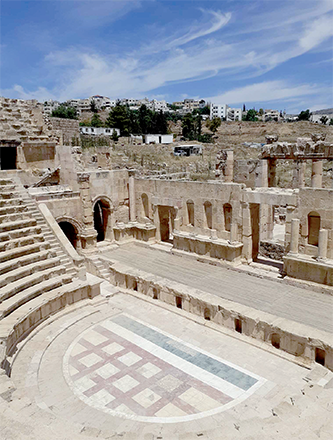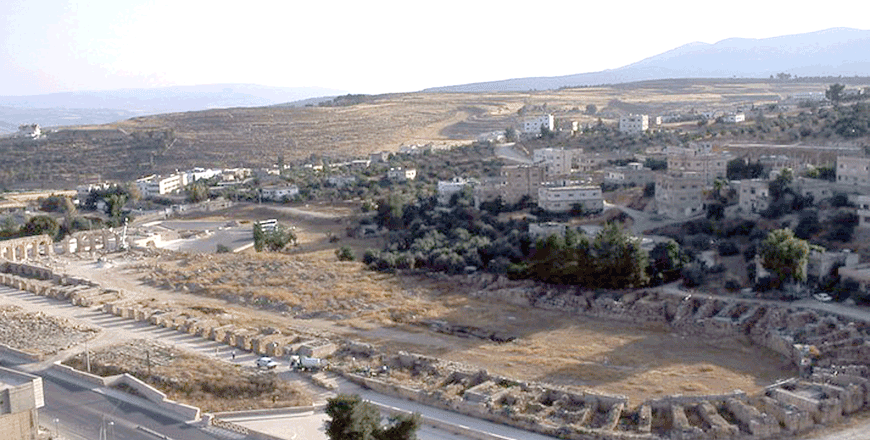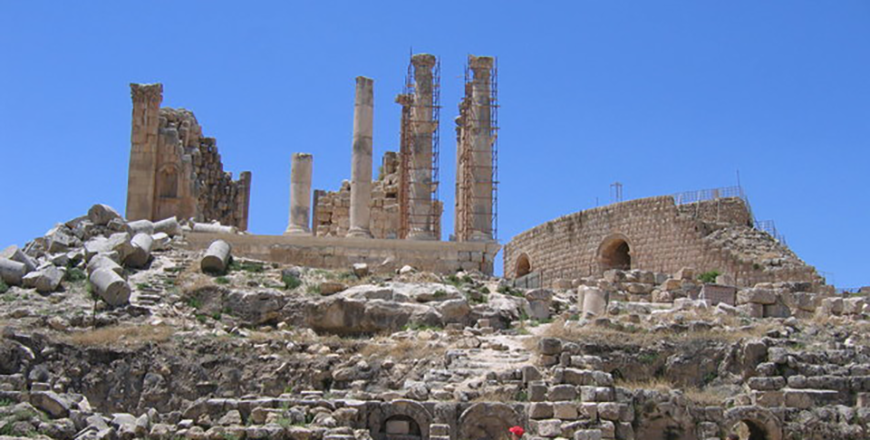You are here
Modern use of Ancient Ruins: Defining ‘spolia’ phenomena in Jerash
By Saeb Rawashdeh - Jul 12,2024 - Last updated at Jul 12,2024

The Northern Theatre in Gerasa built in the first decades of 2nd century AD during a great reconstruction (Photo of Saeb Rawashdeh)
AMMAN — Syntheses of ancient Jerash and its urban spread are based largely on studies of monumental ruins, most of whose visible and imposing remains belong to the Roman and Byzantine eras of the Decapolis city Gerasa.
Crowfoot’s studies in the 1930’s “drew early attention to the selective reuse of older architectural blocks and entire building units in the construction of the first churches.
Indeed, excavations from the later 1920’s have brought to light that most Roman and later monumental remains of Gerasa contain evidence of spolia [the practice of taking stones or decorative elements from older buildings and reusing them with the new structures], and it seems, increasingly so with time.
This trend continued in the Islamic periods, especially after the earthquake of 749 AD when public space like streets and public squares were used by the inhabitants for different purposes, indicating the breakdown of previous civic infrastructure,” noted the Australian scholar Ina Kehrberg-Ostras.
Recent material evidence supports contemporary literary references suggesting that during the Crusades and after the Mamlukes, Jerash had been reduced to an impoverished city, whose glory faded away.
However, with the migration of Caucasian Muslims to the Levant in the late 19th and early 20th century, Jerash became one of the centres of Circassians and Chechens in Transjordan.
The new settlers became the last inheritors of the ancient and then still legal practice of quarrying stones from the ancient ruins for their own constructions: Their well-built now ruinous houses still bear witness to the fact, Ina Kehrberg-Ostras outlined, adding that the history of urban growth has changed relatively little.
Aerial photos spanning almost a century show how little has changed on the west half of Gerasa, the now touristic “urban park”, and emphasise that focus has not shifted from the visible ruins, leaving most of the less spectacular terrain unexplored.
“The aerial views demonstrate how repetitively selective the architectural evidence is, which has served urban studies of Gerasa until recently.
Events overtook and shaped Gerasa [Hellenistic Antioch on the Chrysorhoas] like any other Decapolis city which not only affected the public monuments but almost certainly altered more than once panoramas in many places. We are witness to and responsible for the latest changes of western Gerasa’s inter-monumental artificial landscapes: They have been and are being brought about by substantial spoil heaps from large-scale excavations and clearance work which has changed the 19th and early 20th century agricultural landscape patterns created by the Ottoman farmers and their descendants,” Ina Kehrberg-Ostras underlined.
Archaeology in Gerasa is still mostly limited to a supporting role for restoration projects of Roman and Byzantine monumental ruins and their architectural studies.
Other historical periods are not covered enough.
“Concentration on visible monumental remains and their restoration is also largely responsible for our flawed knowledge of pre-Roman Hellenistic and first century BC/AD Gerasa.
Apart from some literary accounts, notably by the 1st century AD historian Flavius Josephus and first century epigraphic references until very recently [infra] there has been hardly any material evidence from the second century and little of the first centuries BC and AD,” Ina Kehrberg-Ostras said.
Remains of the Hellenistic blocks were found as a building material of the Roman and Byzantine structures.
Each historical epoch was characterised by the collapse of the previous order and by the recycling of the material from older buildings and monuments.
“Architectural blocks from Late Hellenistic buildings were discovered during the excavation or anastyloses of Roman monuments, however most evidence for locations of buildings whose existence is known from recycled blocks stays hidden underground.
One such case is the Late Hellenistic Temple of Zeus a good number of whose richly ornamented blocks were found by the excavators in the underground vaults of the first century naos situated on the lower terrace of the
Zeus Sanctuary,” Ina Kehrberg-Ostras noted.
Related Articles
AMMAN — The hippodrome excavation in Jerash (ancient Gerasa) should be viewed as an exceptional case, said Australian professor Ina Kehrberg
AMMAN — Ancient Gerasa (modern Jerash) was a well-known centre for pottery production: The evidence for that large scale commerce comes from
AMMAN – Syntheses of ancient Jerash and its urban spread are based largely on studies of monumental ruins, most of whose visible and imposin














